Our group visited the famous Ross Bay Cemetery, and we originally wanted to focus on the graves with statues, specifically the angel statues. Unfortunately, there weren't that many human-statues within the cemetery, so we decided to include the ones that located closely to the statues and with obelisks or urns for the purpose of this project.
The first statue we saw the moment we walked into the cemetery was the Pooley angel (picture 1). This appears to be a family monument since the names carved on the stone show family relations. There were no obelisk or urn graves around this monumnet.
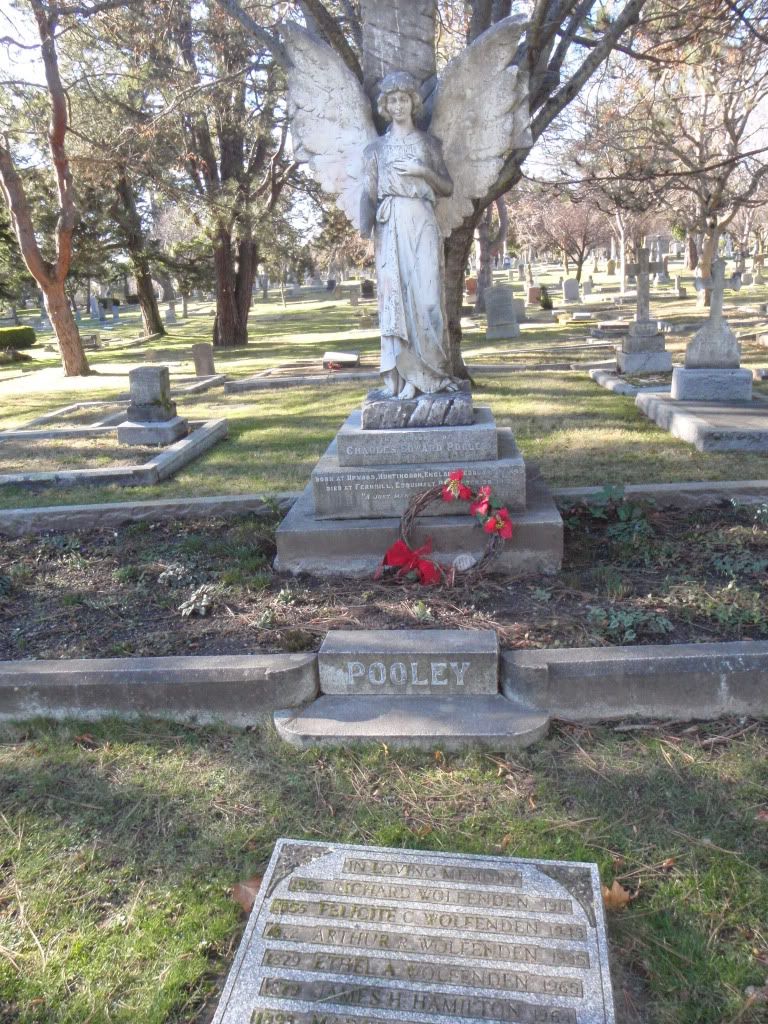 |
| picture 1 |
The Woods family's monument has this maiden statue on the top, and there are obelisk and urn around it (picture 2, 3, 4 repectively).
It's possible that the familys of these three statues are related, or from the same region, but I do not have enough evidence to be certain on this question. Further research is definitely needed if I want to find the relationships between these families. We can certainly track down to the descendants of these families or interview the managers of the cemetery to get some answers. The family with maiden statue appears to be from England, the family with obelisk appears to be from Scotland and some members from Germany, and the family with the urn on the top appears to come from England originally. The oldest dates on each grave are around the same time. But it is still hard to tell if these people are in any way related. It is also possible that the graves were arranged based on where these people came from geographically.
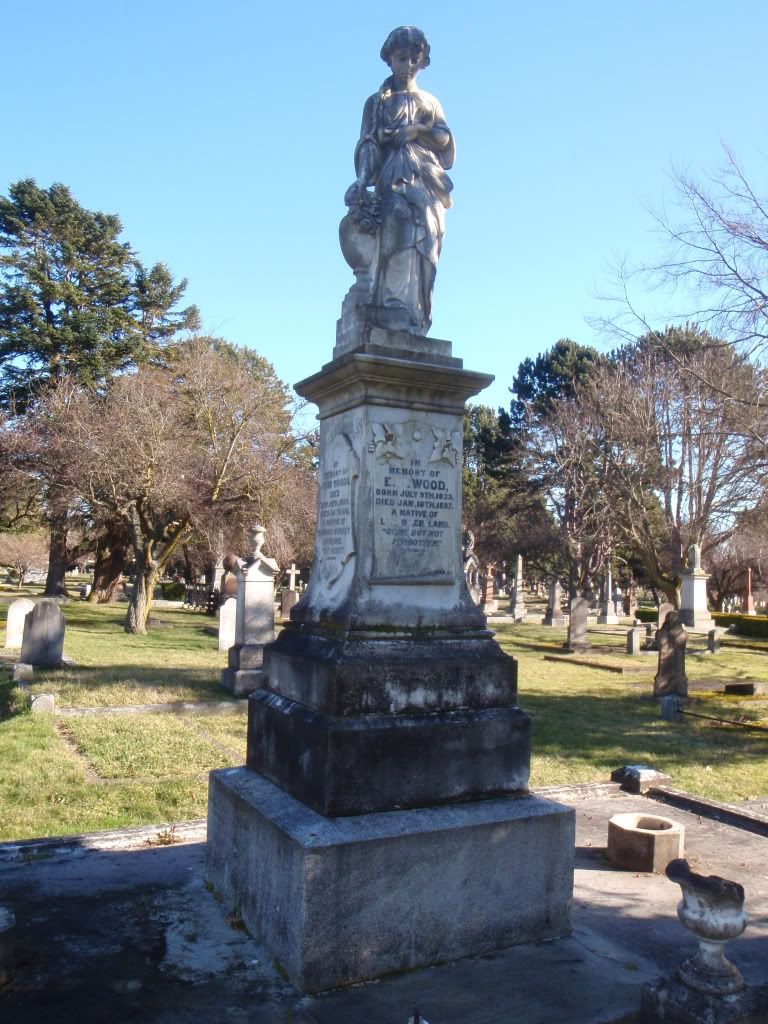 |
| Picture 2 |
The third statue we looked at was the Dean's family statue (picture 5). And the fourth human-like statue is the Bossi family angel (picture6).Similar to the Woods family, we found a obelisk and a urn grave in the surrounding area of these two statues respectively. The research method would likely to be the same to the Wood's family in terms of answering the questions I proposed above, so I won't repeat here.
The questions our group attempt to study are: what are the changes of these statues over time? Are there any gender/age/status/job differences in terms of the locations or the appearances of these monuments?
I think the change of each statue over time would be related to the materials and styles of statues (i.e. what type of angel, urn or obelisk), or even the font of carving on the stones of them.
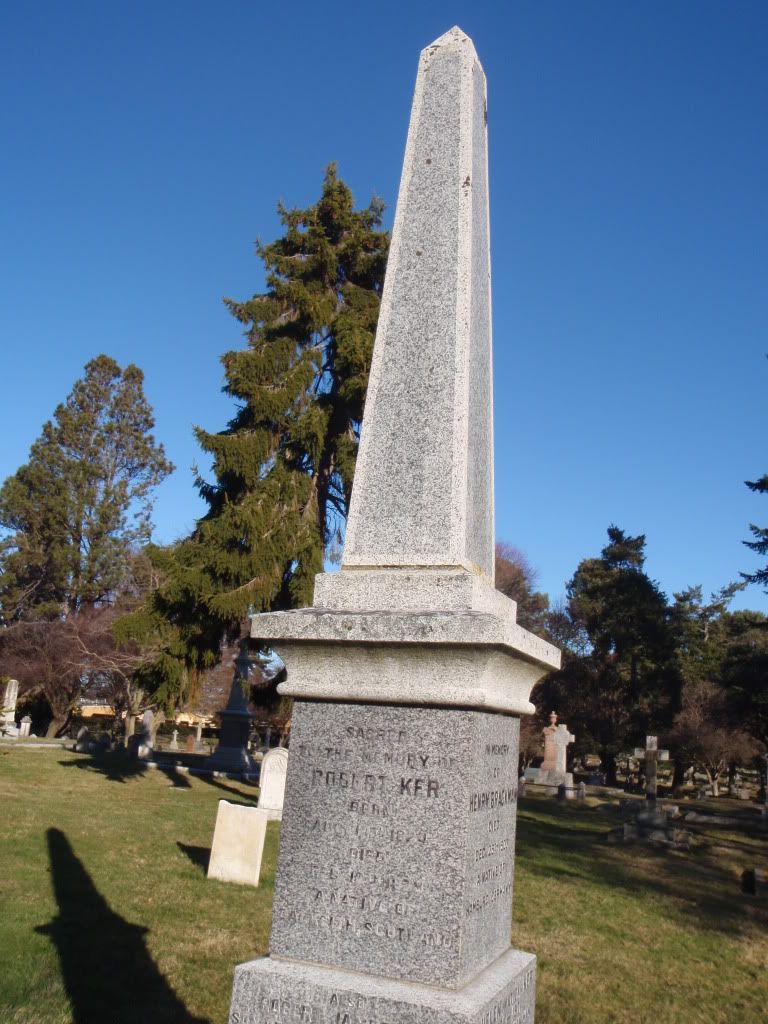 |
| picture 3 |
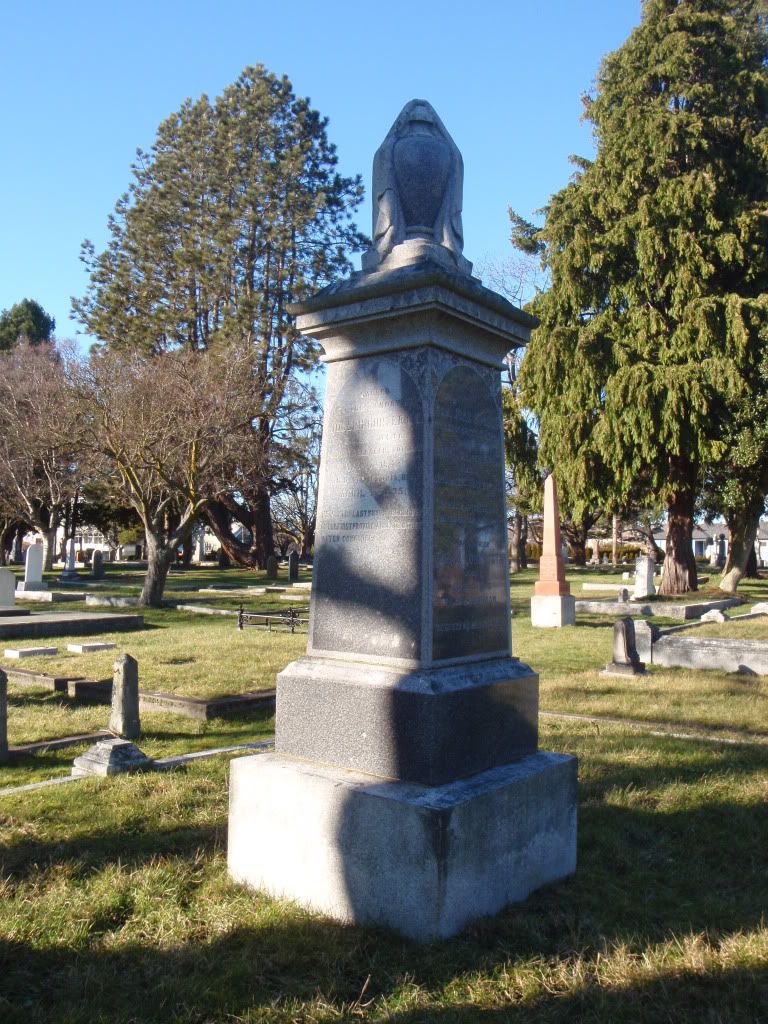 |
| picture 4 |
The gender differences are easy to see: they generally show male dominant pattern. Men's names are usually on the top of women, and most of time there are "wife of..." before the names of these women. The men's achivements during their lives are usually clearly documented if there were any. For instance, on the front side of the Robson's family urn it says: "
Hon. John Robson premier of British Columbia. Born at Perth, Ont. March 14th 1824 died in London, Eng. June 29th 1892 “He was a faithful man and feared God above many”
also his wife Susan Longworth died June 9th 1918 in her 86th year 'He giveth his beloved sleep'"
Here's the map of our group, it has all the detailed inscriptions of these graves:
monument map
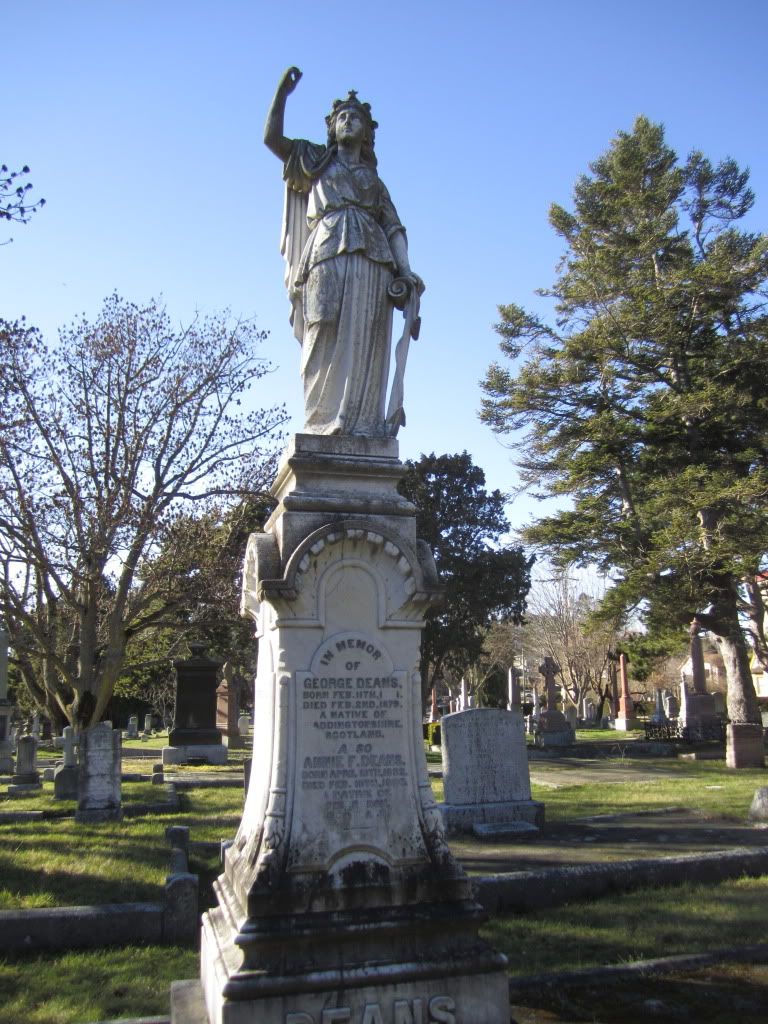 |
| picture 5 |
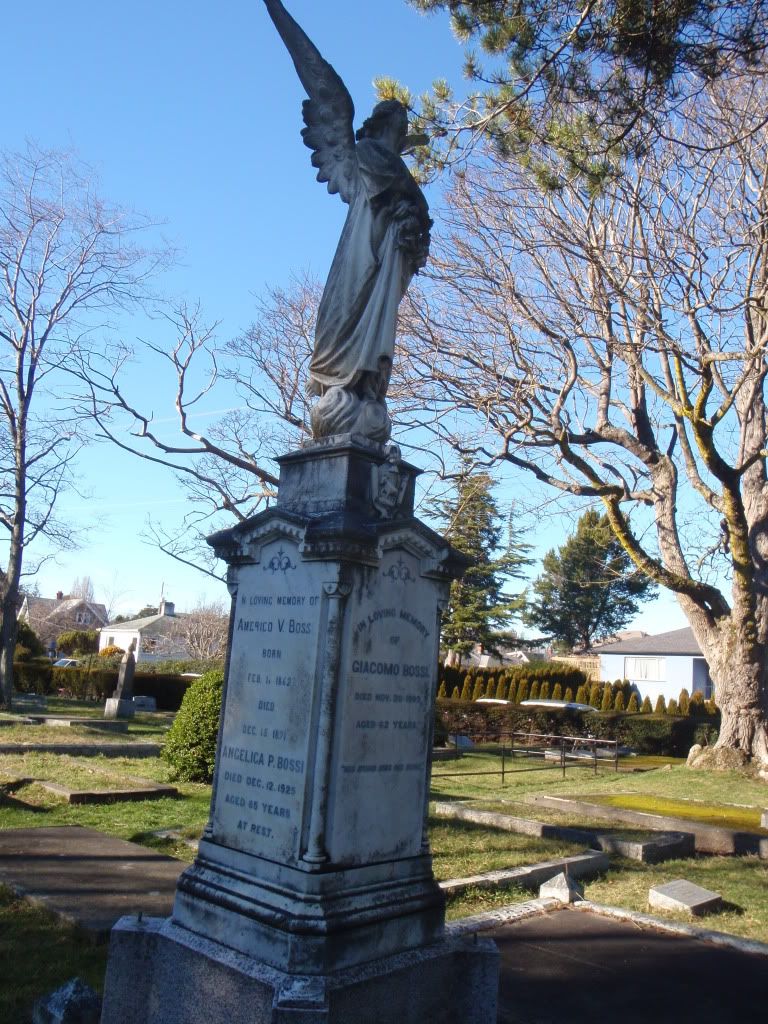 |
| picture 6 |










